
ASCSA Director Jenifer Neils and Members ride camels at the Pyramids of Giza.
The American School Visits Egypt
For the 2018-2019 Academic Program Optional Trip, American School Director Jenifer Neils and Members travelled to Egypt with the W.F. Albright Institute of Archaeological Research. Here, Regular Member and Ph.D. candidate at University of Cincinnati Charles Sturge recounts the adventures from Cairo to Aswan.
On February 22nd the ASCSA group departed for Cairo. For those of us who still thought Athens to be chaotic, the drive from the Cairo Airport to our hotel near Tahrir Square was something of a revelation. Refreshed overnight, we met up with colleagues from the Albright Institute to begin our 10-day tour of Egypt.
First stop: Dahshur to see the Red and Bent Pyramids. While less visited, this was a perfect start as the sight of these pyramids looming out of the early morning haze, in the silence of the desert, was unforgettable. The more intrepid among the group ventured into the Red Pyramid, and suffered for days afterwards as the full effects of the climb within the pyramid were felt. The afternoon saw us at Saqqara, and the step Pyramid of Djoser and the remarkable Serapeum, in which we saw the monumental sarcophagi of Apis bulls that were buried with full honors after their time of service in the temple.
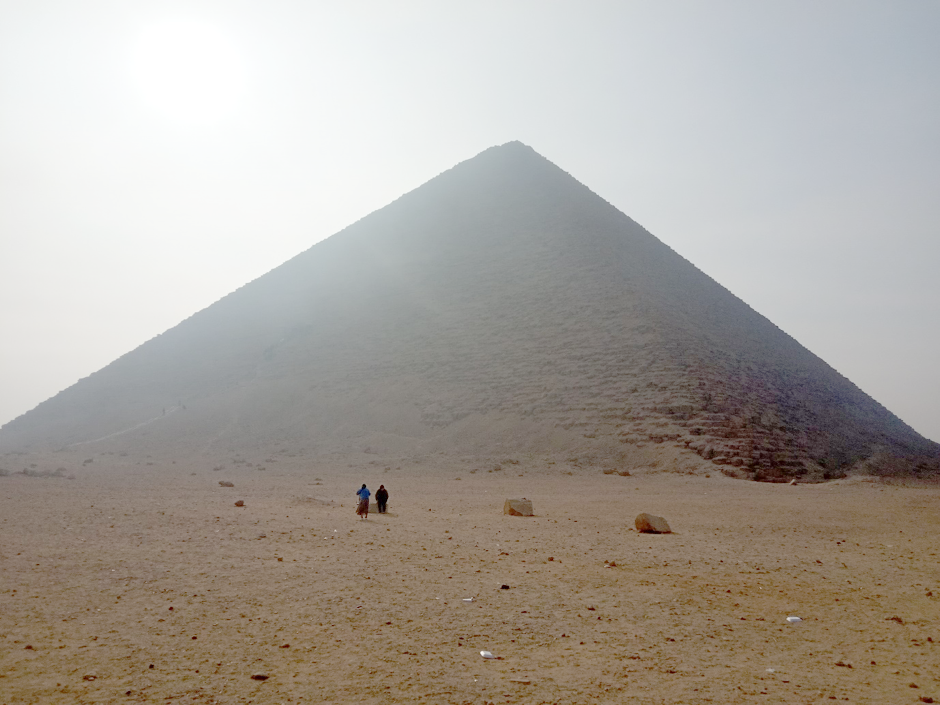
Dahshur - Red Pyramid. Photo: Charles Sturge.
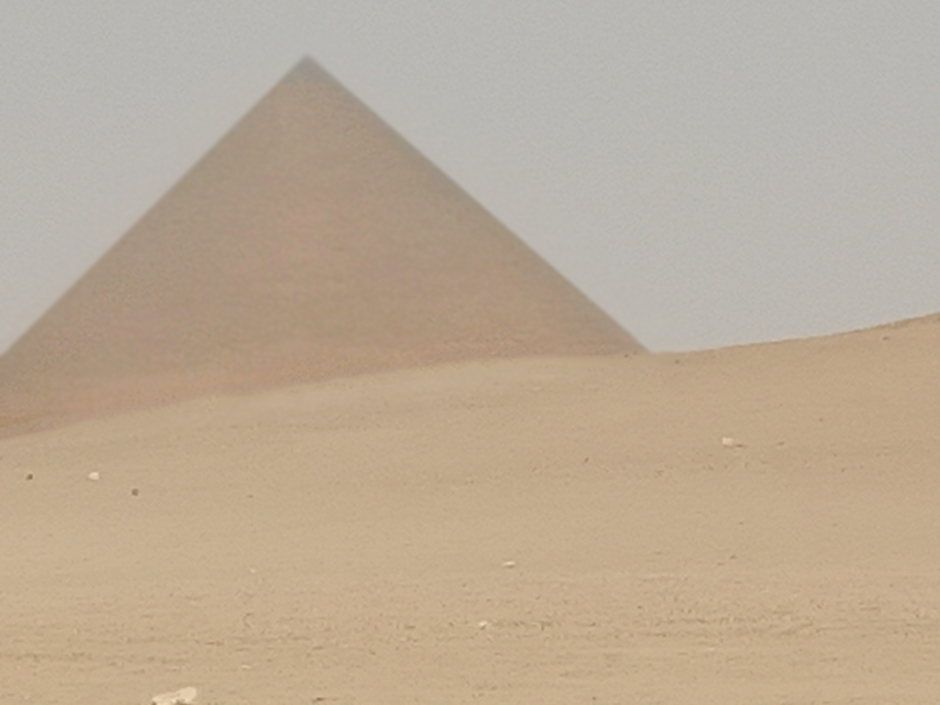
Red Pyramid in the Haze. Photo: Charles Sturge.
The next day we visited several important sites of historic Cairo, such as the Ibn Tulun and Al Azhar mosques; however the highlight of the day was an afternoon at the Egyptian Museum on famous Tahrir Square. Words fail your correspondent to truly describe the experience of visiting what one might term a cathedral among world museums. Finds that elsewhere would be the highlight of any museum were found casually stuffed in side rooms. Memory cards full, and unable to look at even the best Greek museums in the same light again, we returned to the hotel. That evening we were entertained by the American Research Center in Egypt (ARCE), with a fine dinner and meeting many of the researchers who work there. A convivial evening was had by all.

Ibn Tulun Mosque. Photo: Charles Sturge.
The mix of ancient and modern continued the next day with the highly anticipated visit to Giza in the morning, and the Ben Ezra Synagogue and Hanging Church in the afternoon. As is often said, photos cannot capture the scale of the Giza Pyramids, and while some ventured inside the Great Pyramid, others simply sat outside and stared, but perhaps the most extraordinary sight was the perfectly preserved ‘solar boat’ in its museum at the foot of the Great Pyramid. At the stop for a panoramic view some of the braver members of our group rode camels, an experience described as somewhat unnerving, but enjoyable nonetheless.

Solar Boat. Photo: Charles Sturge.
A 3.30 am start (please, no ideas for the Regular Program) saw us fly to Luxor, where we immediately started with a visit to the temples at Karnak. The scale, but more significantly, the preservation of colors at this site, and many others we visited are simply astonishing. We were particularly privileged to visit some of the recently conserved chapels in the temple of Khonsu and the site’s conservation lab. Above all this visit to Egypt changes our ‘imagination’ of what the ancient world must have looked like – from a sort of dull monochrome to one of vivid colors – something we know but is hard to see. Visits to the impressive Luxor temple and museum rounded out the day.
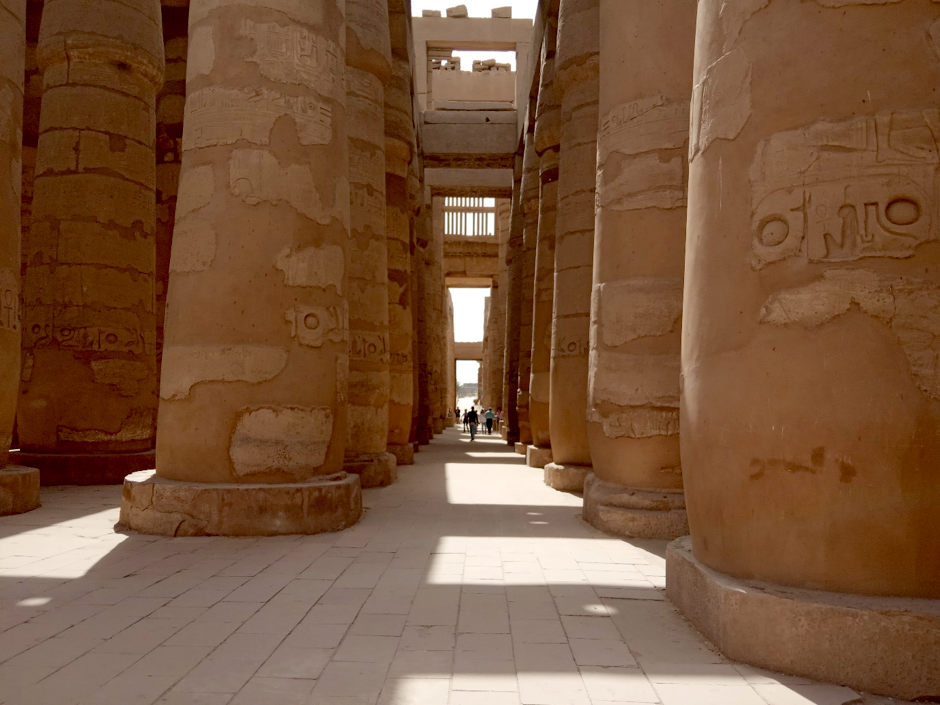
Karnak - Hypostyle Hall. Photo: Charles Sturge.
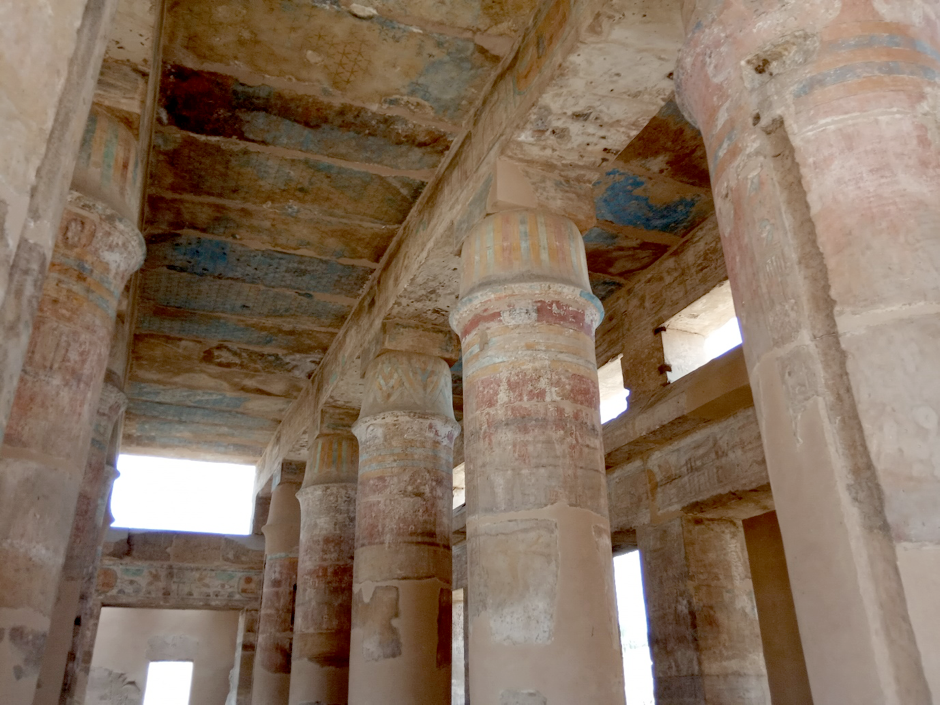
Preserved Middle Kingdom Wall Paintings Karnak. Photo: Charles Sturge.
Another early morning saw us drive to the temple of Seti I at Abydos and the wonderfully preserved temple at Denderah, where some of us were able to get onto the roof – for a somewhat alternative perspective. The following day saw what for many was the highlight of the trip, a visit to the West Bank sites at Luxor – starting at the Ramasseum, we moved to the temple at Medinet Habu, the Mortuary Temple of Hatshepsut and finally the Valley of the Kings. Space does not permit full commentary on the wonders of this dense cluster of significant sites, but particular highlights for me were a discussion of the Sea peoples at Medinet Habu – a site that crossed over the interests of both those of us in Greece and our Jerusalem-based colleagues-- and the tomb of Seti I in the Valley of the Kings. Particular thanks are due to Dr. Matt Adams, our trip leader and director of the Albright, for very generously subsidizing the ASCSA students’ entrance costs into this particular tomb. Again the vividness of the colors will stay long in the memory, as though in some cases the painters had left mere hours before our visit. Those who have never visited I would urge to do so.

Denderah Roof View. Photo: Alice Crowe.

Crossing Over to the West Bank at Luxor. Photo: Tom Strasser.
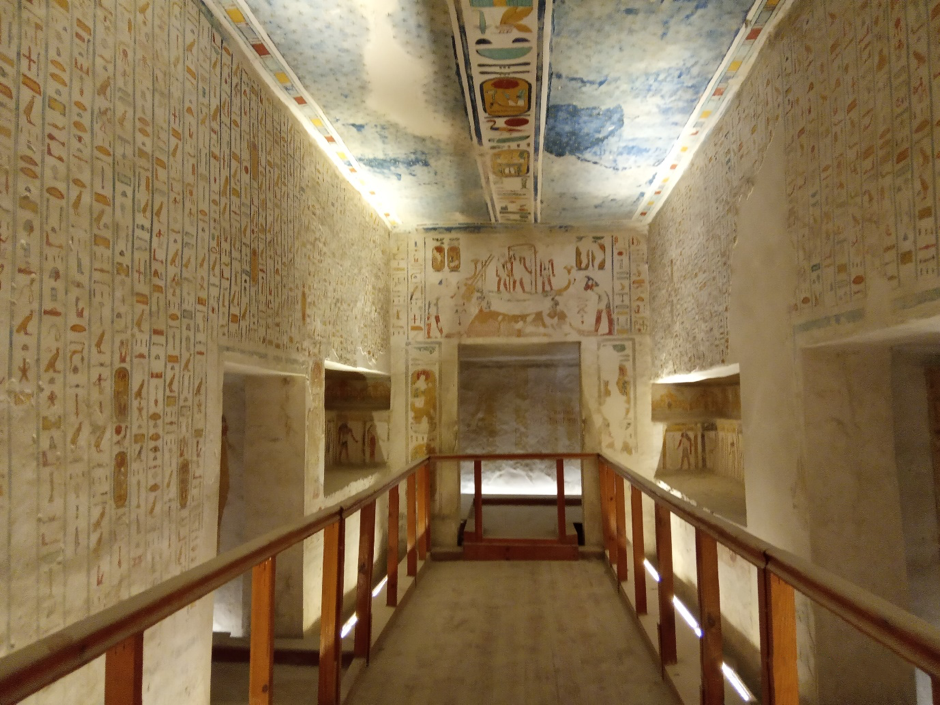
Tomb of Rameses IV. (Unfortunately no photos allowed in Sety I tomb!) Photo: Charles Sturge.
Our whistle-stop tour of Luxor complete – a place I feel one could spend several weeks and not see everything – we drove down to Aswan. Our journey was punctuated by visits to the temples at Edfu and Kom Ombo, and the more Roman minded amongst us were heartened by reliefs of Cleopatra and various Roman emperors, while archaeologists marvelled at a truly extraordinary stratigraphic profile containing layers from the Old Kingdom until the New Kingdom.
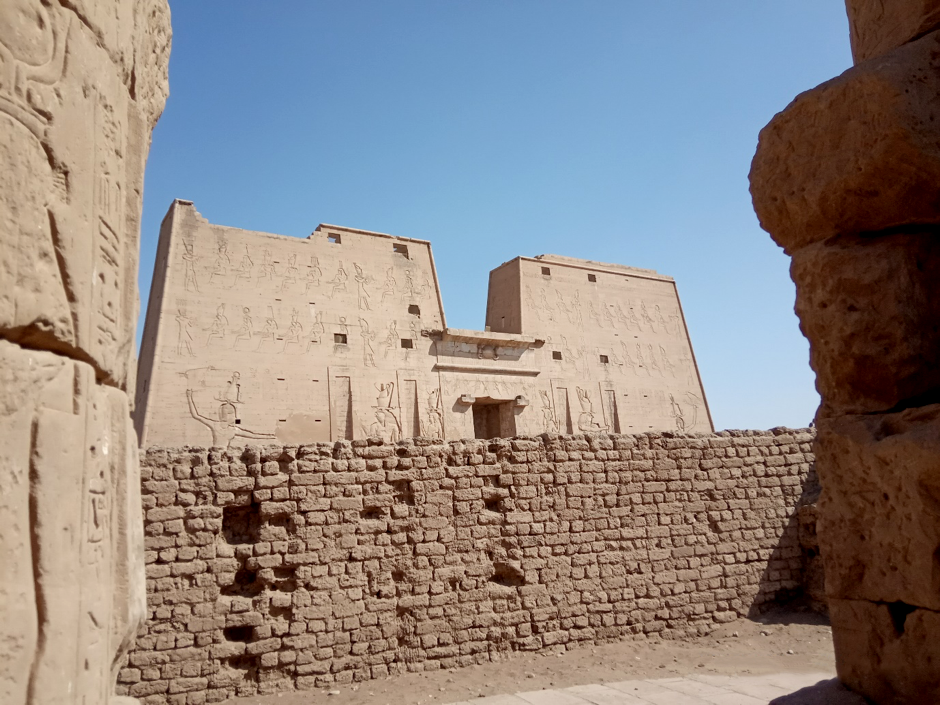
Edfu Temple. Photo: Charles Sturge.
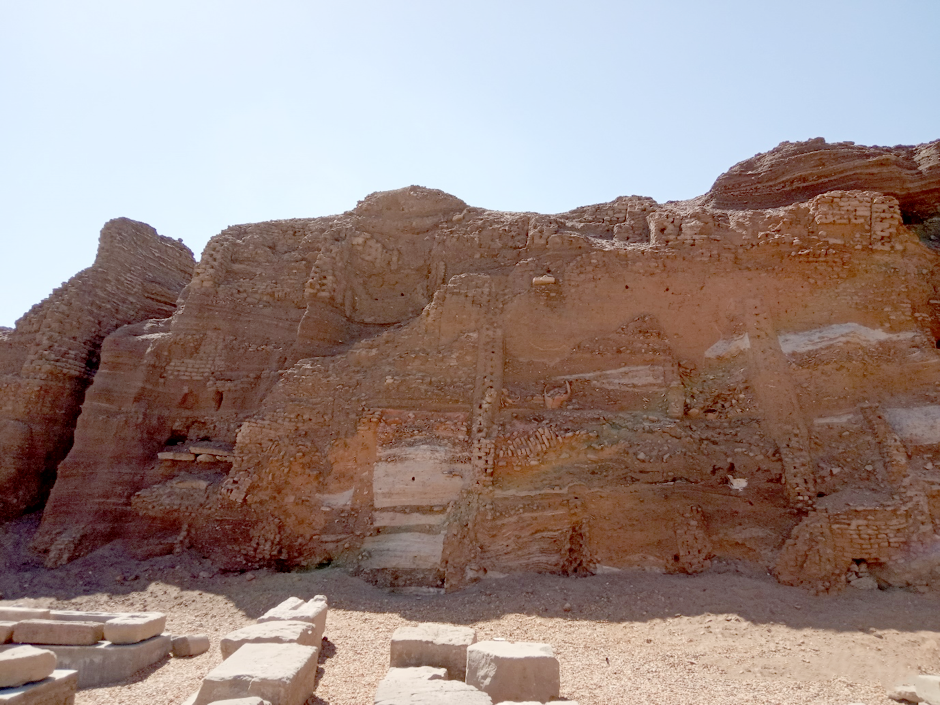
Edfu - profile in tell outside the Temple. Photo: Charles Sturge.
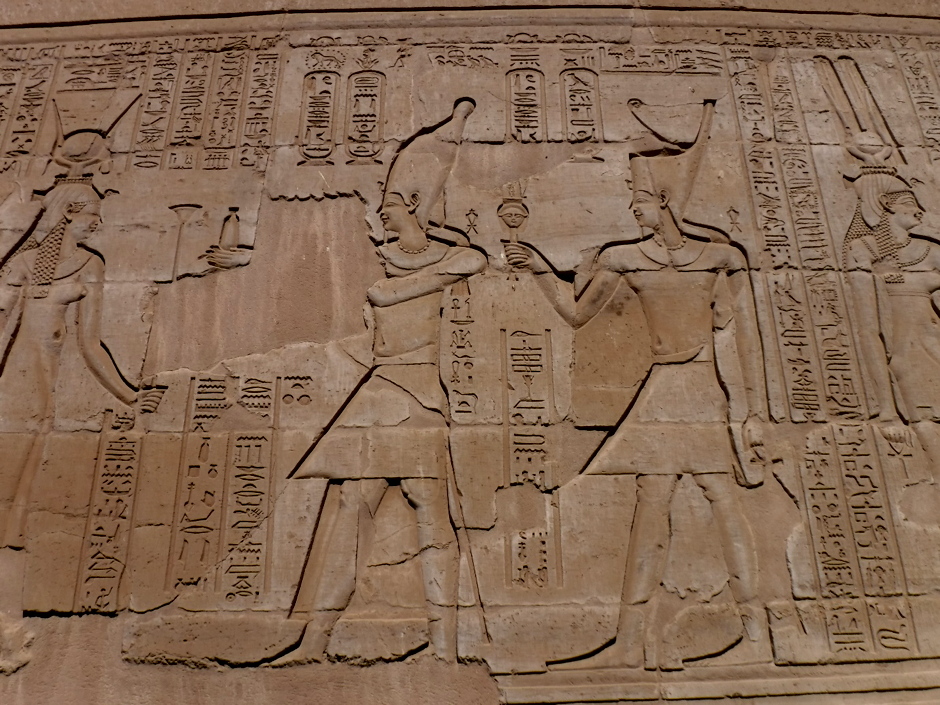
Marcus Aurelius and Lucius Verus in unfamiliar guise, temple at Kom Ombo. Photo: Gavin Blasdel.
In Aswan we saw the famed granite quarries, and then the rescued and repositioned Philae temple. While much was lost in the construction of the Aswan high dam, the restoration of this temple underlined what a remarkable achievement it was to save anything. Our trip was rounded out by a ride in a felucca, enlivened by a waterborne scarf salesman, and a visit to the amazing Nubian Museum. One more night in Cairo saw us return to Athens tired but happy after ten days filled with astonishing sites, baksheesh-related hilarity, and general merriment.